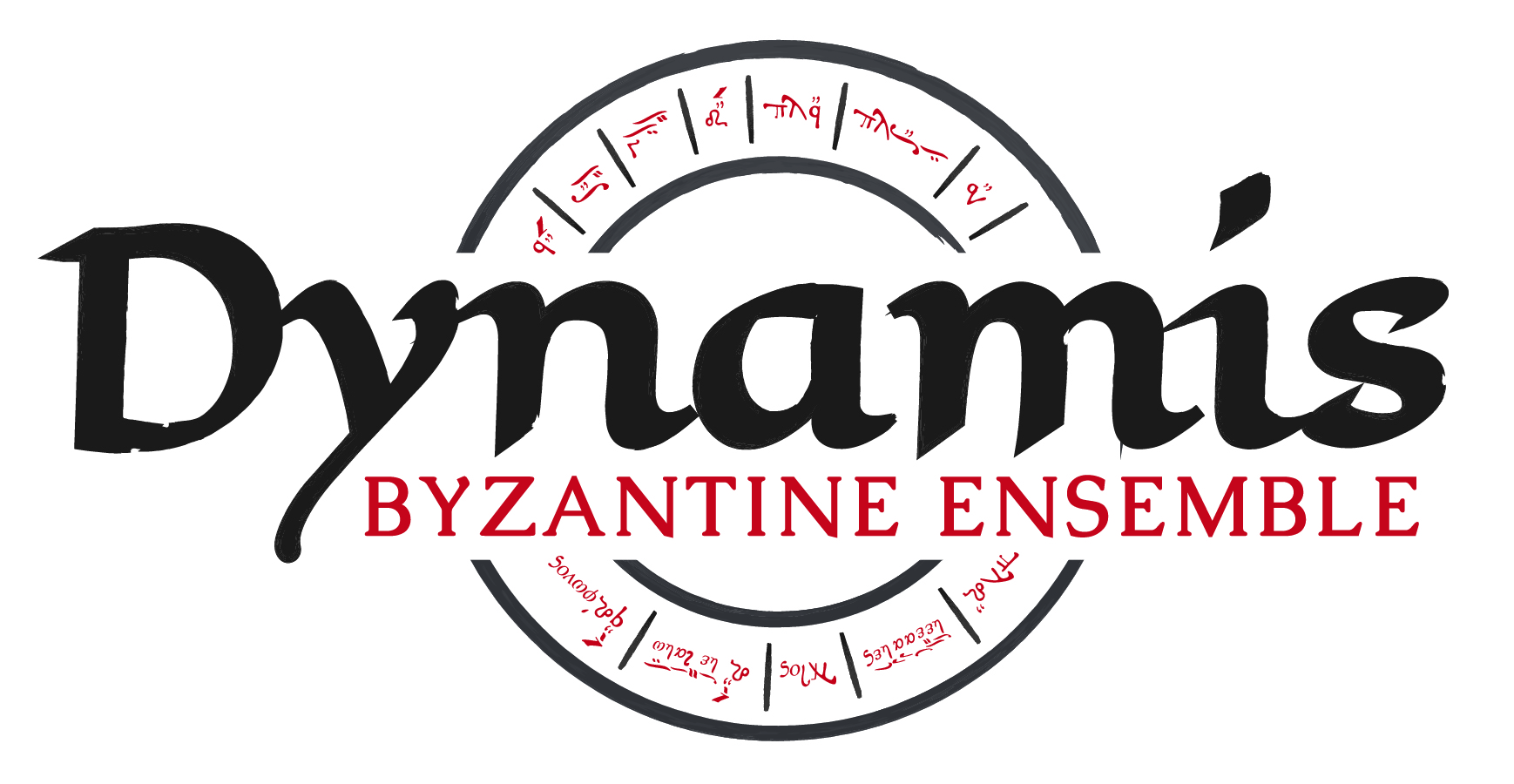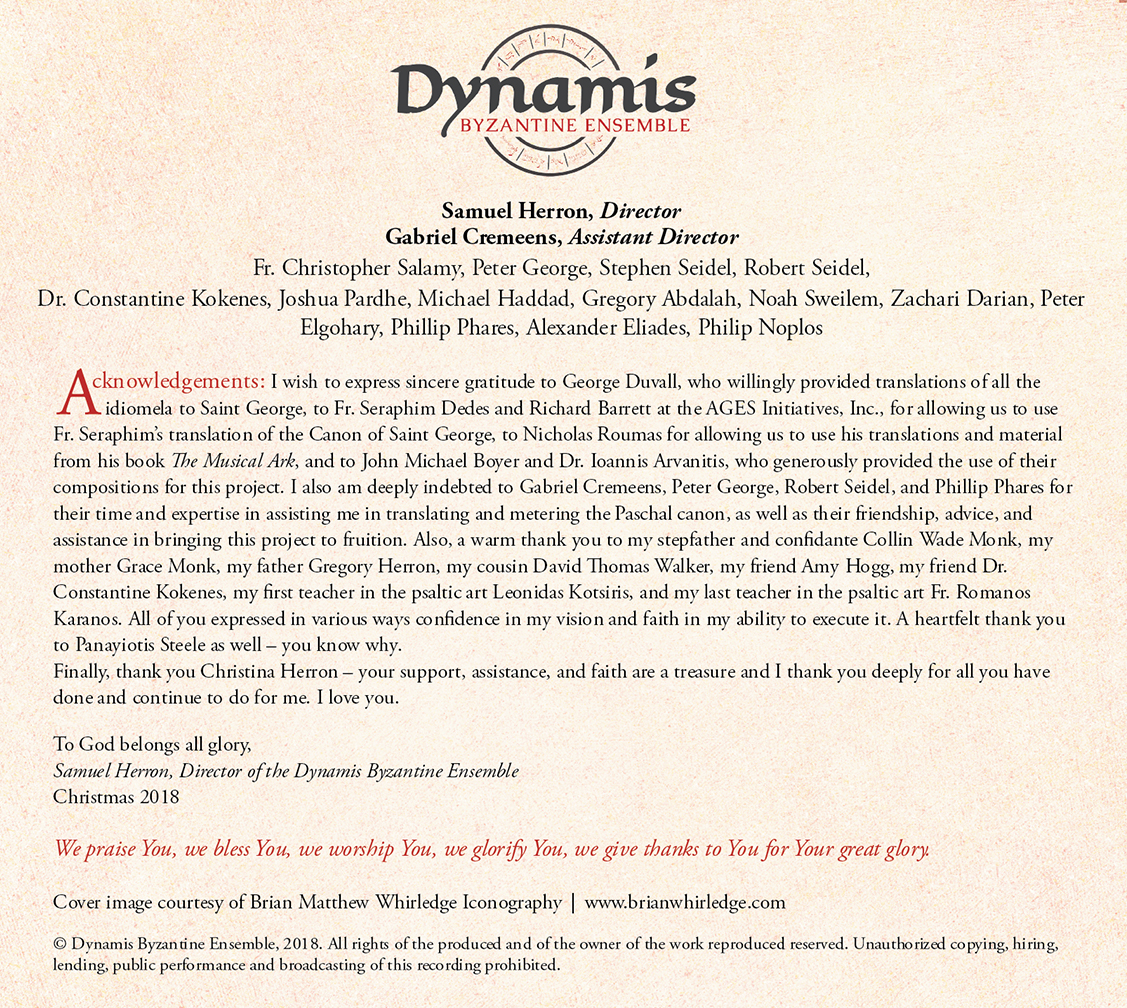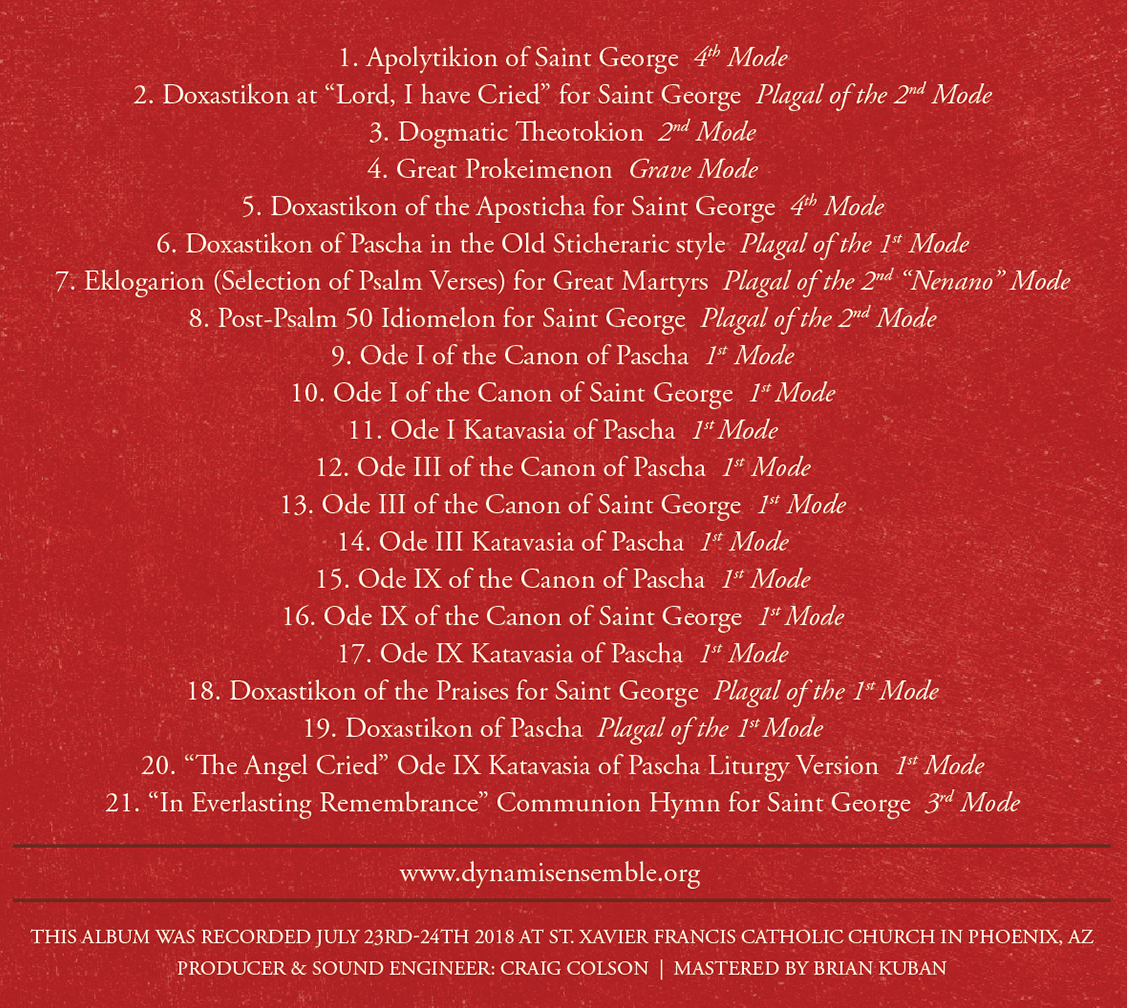The Hymns of Saint George and Bright Monday
About the Recording
I assembled a small Byzantine choir of 15 people and brought them to Phoenix over July 23rd-24th, 2018, where we recorded a selection of the hymns that are chanted during the Vespers, Matins, and Divine Liturgy services for St. George on Bright Monday. St. George is one of the most revered saints in Eastern Orthodoxy - greatly revered in both the Ecumenical Patriarchate of Constantinople and the Antiochian Patriarchate jurisdictions specifically. As such, his hymns have been recorded in both Greek and Arabic many times over by excellent cantors. This recording will attempt to provide a recording in English to add to the tapestry of wonderful recorded offerings of St. George’s hymns in other languages. The overlap with Bright Monday reflects the reality that in many years, when St. George falls before Pascha (a more common occurrence on the New Calendar), his feast is moved to Bright Monday. With the coinciding of Bright Monday, the hymns dedicated to St. George are paired with the hymns of Pascha, giving the project a beautiful dual theme of the commemoration of a great martyr and saint along with glorifying the life-bestowing Resurrection of Christ. In the assembling of the hymns, we were able to cover seven of the eight modes in Byzantine music, only Plagal of the 4th is not represented in our selection of hymns.
The Compositions & Translations
I commissioned the Idiomela to be translated by George Duvall, an accomplished translator and Protopsaltis of Holy Trinity Greek Orthodox Cathedral in Phoenix, AZ. He willingly provided them, and the advantage his translations gave us were a dynamic, poetic set of English hymns perfectly designed to be able to set to music. I proceeded to set the idiomela in the short sticheraric style. Gabriel Cremeens provided his editorial assistance and feedback, and so over a few weeks we had produced high quality settings for the Idiomela.
For the Paschal Canon, Gabriel and I and three others - Phillip Carl Phares, Peter George, and Robert Seidel, diligently worked as a committee on translating and editing a metered canon. We attempted to provide the Heirmoi metered exactly as in the Greek, and in the proceeding troparia we studied the alternatives in Greek to see the leeway St. John of Damascus took in the Greek, and then allowed ourselves a similar amount of ‘freedom’ in the troparia of the Canon. After we finalized the text for the 1st, 3rd, and 9th Ode, I set them based on the melodies found in the Heirmologion of Petros Byzantios 1825, the Hiermologion of Ioannis Protopsaltis 1903, and also oral tradition of how the canon is commonly chanted in the traditional centers of Byzantine chant.
For the Eklogarion, I compiled the appropriate English psalmic verses from translations provided by Nicholas Roumas. My source for the appropriate verses was the Eklogarion of the Ecumenical Patriarchate 1793. Afterwards, I listened to as many recordings of the Athonite Plagal of the Second “Nenano” style of chanting the Eklogarion, and then studied the composed works of Dr. Ioannis Arvanitis, who has set nearly every Ekloge in the “Nenano” mode. I then attempted to do my own, and Gabriel provided editorial assistance.
“The Angel Cried” Divine Liturgy version is a setting of our metered 9th Ode Katavasia that I based on the many different commonly done ways revered chanters in Greece and the Ecumenical Patriarchate chant this hymn. I borrowed from settings by Dimitrios Sourlantzis, Konstantinos Pringos, and Thrasyvoulos Stanitsas to set our English translation in a way that was in a more modern style but still fit the text and brought it alive and was evocative of the original classical melody from the Heirmologion.
The Communion Hymn is Gabriel Cremeens’ adaptation into English of the hymn used for many martyr saints, “In everlasting remembrance shall the righteous be.” This 3rd Mode setting in Greek was originally done by the renowned 17th century composer Petros Bereketis, but had been ‘lost’ to history, as it had not been transcribed into the Chrysanthine Notation of 1814 and remained only in the old notation in manuscript form for over 200 years. However, Dr. Ioannis Arvanitis, the foremost authority on the old notation, transcribed it a few years ago, and remarkably provided the transcription on the internet for free. Gabriel took his transcription and adapted it to the English text.
The Dogmatic Theotokion is a work by Nicholas Roumas from his book The Musical Ark. I would encourage anyone to please check this book out if they have not, it contains many fantastic settings of hymns in English and Byzantine notation.
The Great Prokeimenon and Doxastikon of Pascha in the short sticheraric style were provided to us by John Michael Boyer, Protopsaltis of the San Francisco Metropolis (GOA). His compositional work is exemplary, and some of it can be seen at Cappella Romana’s website.
The Doxastikon of Pascha in the long sticheraric style is an adaptation/composition done by Dr. Ioannis Arvanitis. He provided this hymn back in 2014, and Gabriel Cremeens typeset it. This long sticheraric setting of this hymn is traditionally chanted in Greece and at the Ecumenical Patriarchate at the Aposticha of ‘Agape’ Vespers - the Vespers of Bright Monday. Since we had this wonderful work now in English, we chose to record it and attempt to demonstrate its power and meditative beauty.
~Samuel Herron, Director



